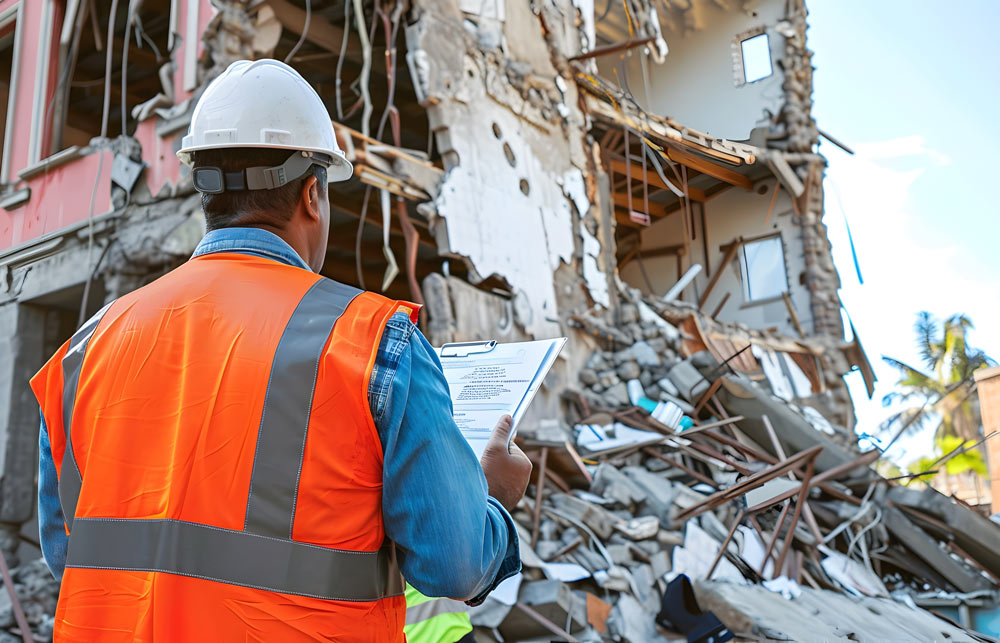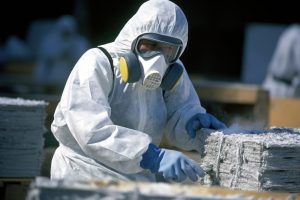Demolition projects can be complex and dangerous, requiring careful planning and execution. Whether you’re working on a large commercial site or a small residential property, the risks involved are significant. To ensure that demolition projects proceed safely, it’s essential to understand and mitigate potential hazards. This post will explore the top five safety hazards associated with demolition and provide practical tips on how to manage these risks effectively.
1. Structural Instability
Why It’s a Hazard
Demolition projects, by their very nature, involve working with structures that are often already compromised or weakened. These buildings may have been subjected to weather damage, aging, or poor maintenance, which can cause unexpected collapses. Without proper assessments, structural instability poses one of the greatest risks during demolition.
Key Risks
- Unexpected Collapse: Parts of the building or the entire structure may collapse unexpectedly, endangering workers and nearby structures.
- Falling Debris: Uncontrolled falling materials can strike workers, machinery, or passersby, leading to severe injuries or fatalities.
Mitigation Strategies
- Pre-demolition Surveys: Conduct thorough surveys to assess the condition of the structure. A structural engineer should inspect the integrity of the building to identify weaknesses.
- Controlled Demolition Techniques: Use methods that limit uncontrolled collapse, such as sequential demolition, which involves systematically taking apart the building.
- Safety Zones: Establish exclusion zones where non-essential personnel are prohibited during demolition activities. This minimizes the risk of falling debris injuries.
2. Hazardous Materials Exposure
Why It’s a Hazard
Older buildings, especially those built before the 1980s, often contain hazardous materials such as asbestos, lead paint, and chemical residues. Exposure to these materials can cause serious health issues, particularly if they are not identified and managed correctly before demolition begins.
Key Risks
- Asbestos Exposure: Inhaling asbestos fibers can lead to severe respiratory diseases like asbestosis and lung cancer.
- Lead Poisoning: Lead from old paint or plumbing can cause neurological damage and other health problems.
- Chemical Residues: Sites like factories or laboratories may contain hazardous chemicals that could be released during demolition.
Mitigation Strategies
- Asbestos Surveys: Conduct an asbestos survey and hire a licensed professional to remove asbestos before demolition starts. Follow all local regulations for asbestos removal and disposal.
- Proper PPE: Ensure workers are equipped with the necessary Personal Protective Equipment (PPE), such as respirators and protective clothing, to prevent exposure to harmful materials.
- Safe Waste Disposal: Implement strict protocols for the containment and disposal of hazardous materials. Ensure that all waste is handled by certified disposal services.
3. Heavy Machinery Accidents
Why It’s a Hazard
Demolition sites often require the use of heavy machinery, such as excavators, bulldozers, and cranes. While these machines make the demolition process faster and more efficient, they also increase the risk of accidents if not operated properly.
Key Risks
- Machinery Malfunction: Poorly maintained machinery can malfunction, causing severe accidents.
- Operator Error: Inexperienced or poorly trained operators may misuse machinery, leading to accidents like tip-overs or collisions.
- Pinch Points: Workers near operating machinery can get caught in the machinery’s moving parts, leading to severe injuries.
Mitigation Strategies
- Regular Equipment Inspections: Implement a schedule for the routine inspection and maintenance of all heavy machinery. Any faulty equipment should be taken out of operation immediately.
- Operator Training: Ensure that all machinery operators are well-trained and certified to handle the specific equipment being used on the site.
- Communication Protocols: Establish clear communication protocols between operators and ground workers, including the use of hand signals and radio communication, to prevent accidents.
4. Electrical Hazards
Why It’s a Hazard
Electrical hazards are a significant concern on demolition sites, particularly if the building is still connected to active power lines or has outdated wiring. Workers may also encounter buried utilities or damaged electrical systems during the demolition process, leading to potential electric shocks, burns, or even electrocution.
Key Risks
- Live Wires: If the electricity supply has not been properly isolated, workers may come into contact with live wires.
- Faulty Electrical Systems: Outdated or damaged electrical systems in older buildings can spark fires or short circuits during demolition.
- Underground Utilities: Hitting underground electrical cables during excavation work can result in power outages, fires, or serious injury.
Mitigation Strategies
- Utility Disconnection: Before any demolition work begins, ensure that all utilities, including electricity, gas, and water, have been properly disconnected by qualified professionals.
- Electrical Hazard Training: Train workers to recognize potential electrical hazards and know how to handle them appropriately.
- Use Insulated Tools: Ensure workers use insulated tools and wear appropriate PPE when working near any potential electrical hazards.
5. Falling from Heights
Why It’s a Hazard
Demolition projects often involve working at various heights, particularly when dealing with multi-story buildings. Falls are one of the most common causes of injury and death on construction and demolition sites, making it essential to implement stringent safety measures when working at height.
Key Risks
- Scaffolding Failure: Poorly erected or maintained scaffolding can collapse, leading to falls.
- Lack of Fall Protection: Workers operating at height without proper fall protection are at a higher risk of serious injury or death.
- Ladders and Platforms: Improper use of ladders or unstable platforms increases the risk of falling.
Mitigation Strategies
- Use of Fall Protection Equipment: Workers should always wear fall protection gear, such as harnesses and lanyards when working at height. Anchor points and safety nets should also be in place.
- Scaffolding Inspections: Ensure that all scaffolding is erected by qualified personnel and undergoes regular inspections to confirm its stability and safety.
- Ladder Safety: Train workers on how to use ladders correctly, including checking the condition of the ladder before use and ensuring it is set up on a stable surface.
Conclusion
Safety in demolition projects cannot be overemphasized. The inherent dangers of working in compromised structures, handling hazardous materials, operating heavy machinery, and dealing with electrical hazards or heights make these projects high-risk. By understanding and addressing the top five safety hazards—structural instability, hazardous materials exposure, heavy machinery accidents, electrical hazards, and falling from heights—you can significantly reduce the risk of accidents and ensure a safer working environment.
Implementing comprehensive safety protocols, investing in proper training, and adhering to legal guidelines are crucial steps to protect workers and the public in any demolition project. Always prioritize safety—it could mean the difference between a successful project and a dangerous disaster.




